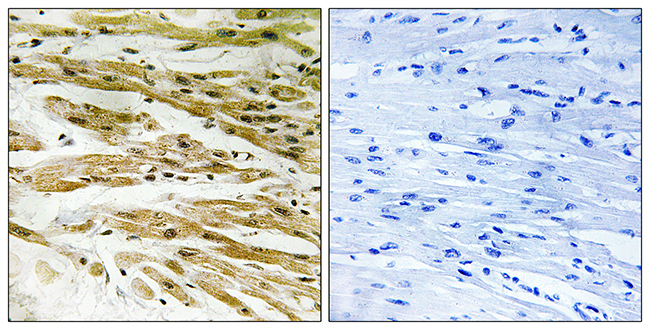![DMC1(2H12/4), CF640R conjugate, 0.1mg/mL [26628-22-8] DMC1(2H12/4), CF640R conjugate, 0.1mg/mL [26628-22-8]](https://biotium.com/wp-content/uploads/2021/02/view_image-198.jpeg)
DMC1(2H12/4), CF640R conjugate, 0.1mg/mL [26628-22-8]
BNC402178
ApplicationsImmunoHistoChemistry, ImmunoHistoChemistry Paraffin
Product group Antibodies
ReactivityBovine, Human, Mouse, Rat
TargetDMC1
Overview
- SupplierBiotium
- Product NameDMC1(2H12/4), CF640R conjugate, 0.1mg/mL [26628-22-8]
- Delivery Days Customer9
- ApplicationsImmunoHistoChemistry, ImmunoHistoChemistry Paraffin
- CertificationResearch Use Only
- ClonalityMonoclonal
- Clone ID2H12/4
- Concentration0.1 mg/ml
- ConjugateOther Conjugate
- Gene ID11144
- Target nameDMC1
- Target descriptionDNA meiotic recombinase 1
- Target synonymsDMC1H, LIM15, dJ199H16.1, meiotic recombination protein DMC1/LIM15 homolog, DMC1 dosage suppressor of mck1 homolog, meiosis-specific homologous recombination, disrupted meiotic cDNA1, yeast, homolog of
- HostMouse
- IsotypeIgG2a
- Protein IDQ14565
- Protein NameMeiotic recombination protein DMC1/LIM15 homolog
- Scientific DescriptionDNA repair proteins are necessary for the maintenance of chromosome integrity and are involved in the elimination of premutagenic lesions from DNA. The DNA repair proteins Rad51 and Rad52 are key components of the doublestrand-break repair (DSBR) pathway. Rad51 is essential for mitotic and meiotic recombination, and its mutation in yeast and mammalian cells results in chromosome loss. Overexpression of Rad52 confers resistance to ionizing radiation and induces homologous intrachromosomal recombination. Rad52 is thought to be involved in an early stage of Rad51-mediated recombination. Additional proteins involved in the pathway include Nibrin and Dmc1. Nibrin, which complexes with Mre11 and Rad50, is absent in Nijemegen breakage syndrome (NBS) patients. Dmc1 is specifically involved in meiotic recombination. An alternative spliced form of Dmc1, designated Dmc1-D, is deleted for a region between the two motifs involved in nucleotide binding. The alternatively spliced Dmc1-D transcript is detected in both male and female germ cells, indicating that the encoded protein may have a role in mammalian genetic recombination in meiosis. Primary antibodies are available purified, or with a selection of fluorescent CF® Dyes and other labels. CF® Dyes offer exceptional brightness and photostability. Note: Conjugates of blue fluorescent dyes like CF®405S and CF®405M are not recommended for detecting low abundance targets, because blue dyes have lower fluorescence and can give higher non-specific background than other dye colors.
- SourceAnimal
- ReactivityBovine, Human, Mouse, Rat
- Storage Instruction2°C to 8°C
- UNSPSC12352203





